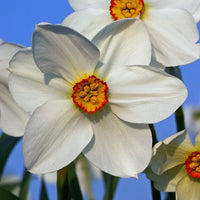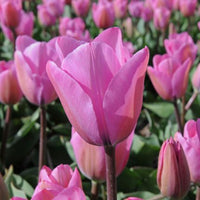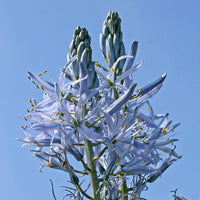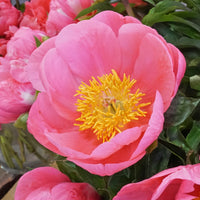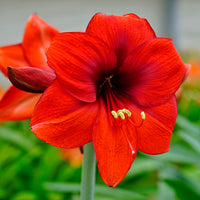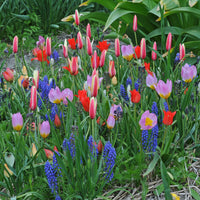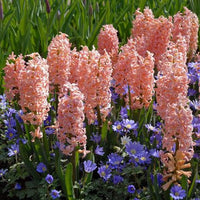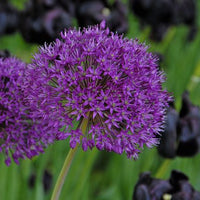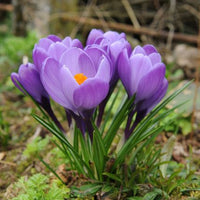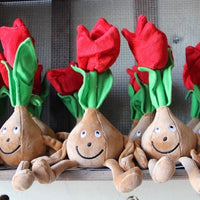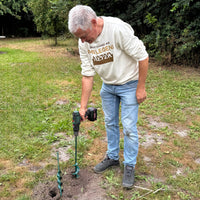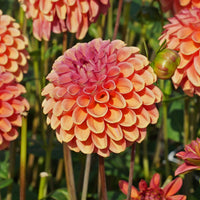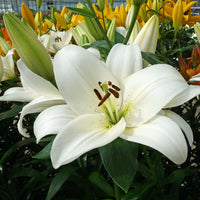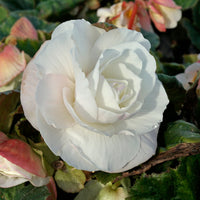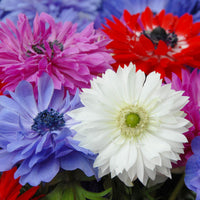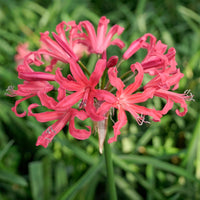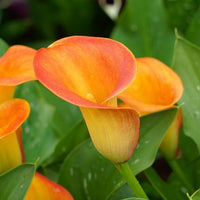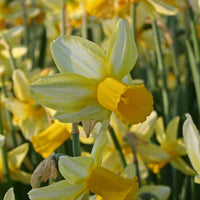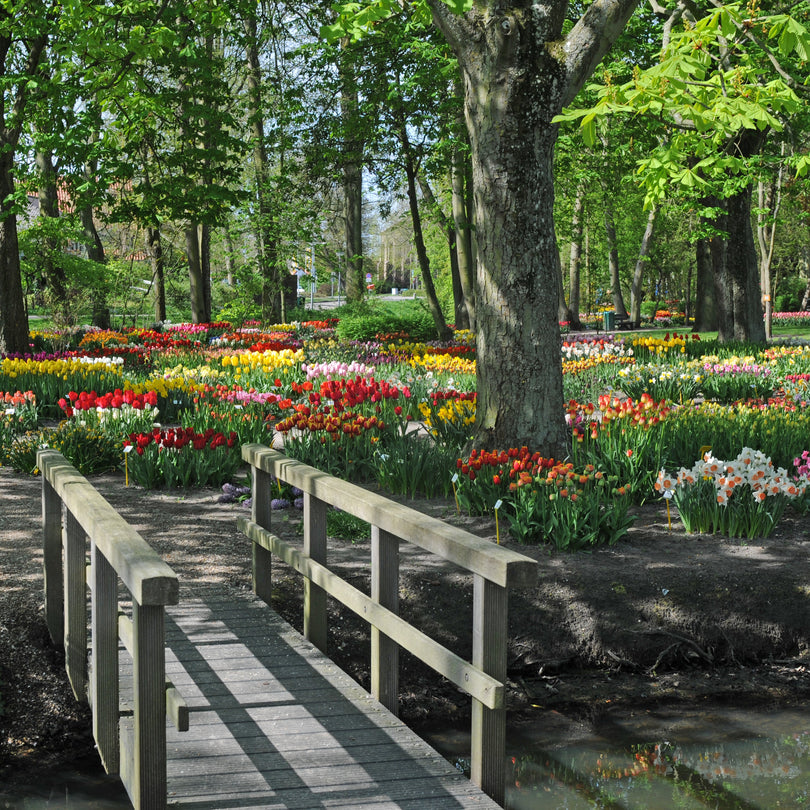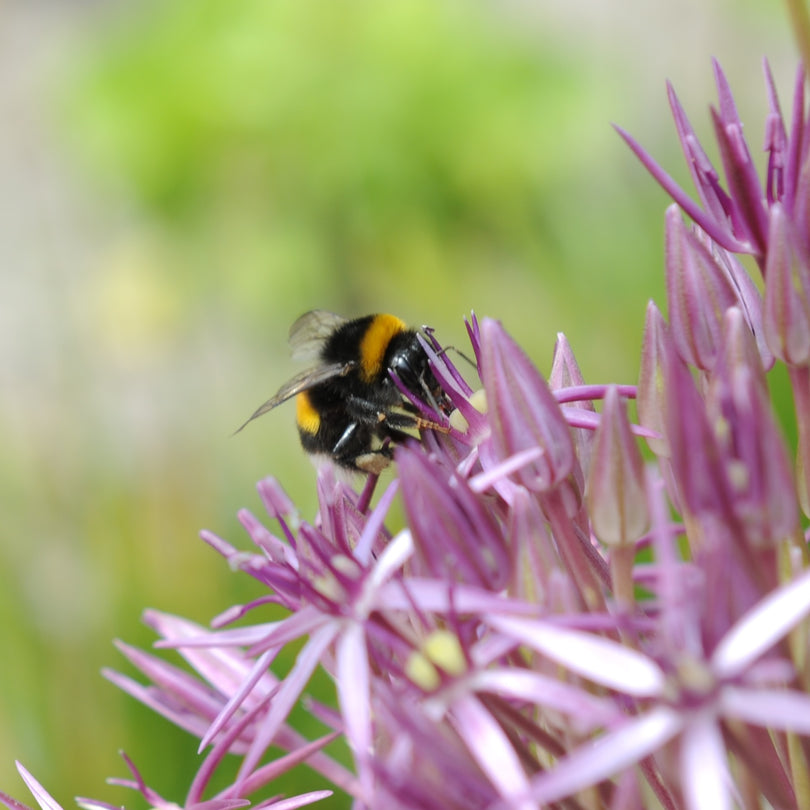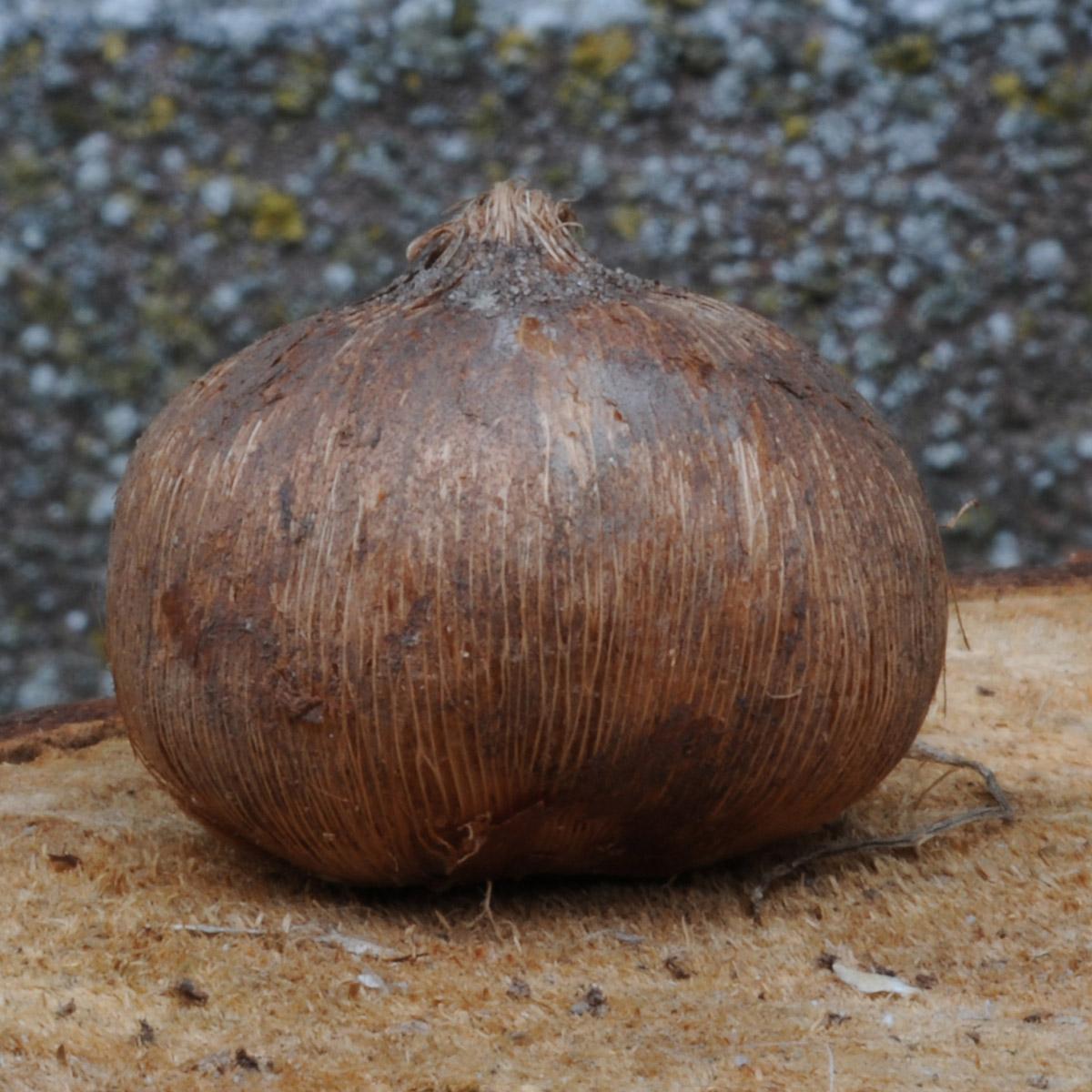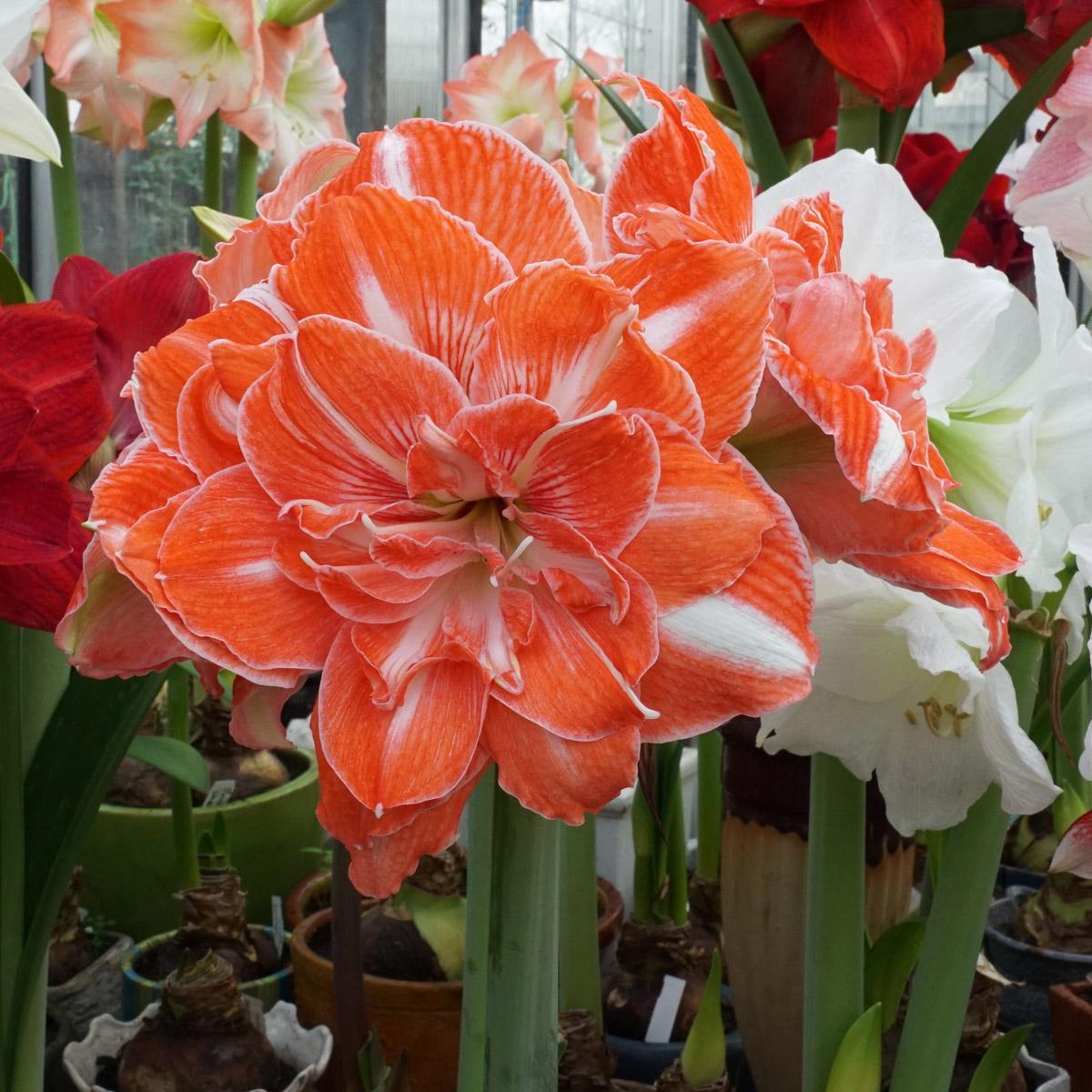I'm glad my guy isn't a gardener!
I received this statement last Thursday in a wonderful Westland dialect from a nice lady who was butting Amaryllis bulbs at one of our Amaryllis growers. You might think what a silly statement but the word gardener is in some parts of Holland also used for a plant or a flower grower.
As you can see, I have been to the Westland area to visit our suppliers of Amaryllis bulbs. I try to do that once every year in the fall to give them a large box of Daffodil bulbs as a thank you for the beautiful bulbs they delivered to us. And of course, catch up on how sales are going and what they are going to do for next year. Whether new varieties will be added or whether they will disappear. But especially for the fun, Amaryllis growers are all pleasant and nice people who always cheer you up when you pay them a visit.
Yes, it was really nice and cozy, and this year I also made the long drive beyond The Hague with a chauffeur. Yes yes, I know, that sounds too good, but now you shouldn't think something along the lines of 'does that Carlos now earn so much from the Amaryllis sales that he can afford a chauffeur. Almost, not quite yet, if you all buy a few more today, it might be possible.
No, Karel has just returned from America and wanted to go to Het Westland, just got his driver's license and 'may I drive then' was his question. Sure, making miles is the only way to learn.
The Biondina bulb
Nice to catch up on the trip and of course about that extravagant amount he paid for that Biondina bulb above in the photo at the auction of The American Daffodil Society. Expensive? Well no dude, that Wee Dote, those other small balls that you were also interested in went for $ 325, - there was even one that went over 400 said Karel. Good to know that we have a bargain with a $ 200 Biondina. Have you seen anything funny in America? Yes, boiled eggs in a plastic bag, they sell them in the supermarket over there.
Flower booth of Amaryllis grower NL van Geest
The first nursery we visited belonged to Ben and Gerard van Geest. Immediately sent out of the office after the first cup of coffee because an old friend came to visit with whom Ben wanted to have a chat. Just walk around, show Karel the company. We immediately ran into a couple of cheerfully babbling 'old farts' who were butting Amaryllis bulbs. Sorry, but that's what they called themselves. When they said that to me my completely wrong answer was, sometimes I think aloud, 'Yes, we can see that'. Fortunately they could laugh about it, 1954 was her year of construction, I was told by one of the cheerful aged girls.
The ladies preferred not to be in the picture, so I used this photo of the village of Petten and the North Sea. You will see our Daffodils around the rear wind turbine.
What a job, isn't it, one of the ladies said as she was cutting the old roots and the bottom of the young Amaryllis bulb at breakneck speed. It takes some work to grow 1 such bulb into a big one, she continued. Always working with those bulbs for years, I'm glad my guy isn't a gardener. On the other hand, that guy of mine had a garage, brakes, speed and 'power under the hood' was often the talk at the kitchen table with us, also not really great.
Butting an Amaryllis bulb
But maybe I should explain to you what butting exactly is, otherwise your mind might wander completely in the wrong direction when you read that I came across a few old ladies who were butting. I also can't help the fact that they call it butting, but butting is cutting off the root and basal plate from the bottom of the Amaryllis bulb. This is done to clean the bulb completely before it is planted back in the greenhouse to grow for another year. Fungal spores and other diseases left behind on the roots and bulb base are removed in this way. Not all bulbs undergo this horrible torture, it is mainly done with Amaryllis varieties that are more sensitive to disease.
Steaming the soil in the greenhouse
It is the challenge for the Amaryllis grower to make the pressure of the diseases as low as possible before he starts the new growing season. Butting is part of that, but he also has to get his soil in the greenhouse, in which the bulbs will be planted, completely clean. They do this by steaming the soil. Steaming is done by placing a cover over the ground and then blowing steam under it for a few hours. The soil becomes so warm that all diseases in the soil die.
Karel and Ben van Geest
Nice to know is that the bulbs that are going to be planted in this soil undergo a kind of the same heat treatment. All, but really all, Amaryllis bulbs that are planted in the greenhouse undergo a warm water treatment before planting. For two hours the ae put in a large kettle with water that is heated to a temperature of 47 degrees. This is a temperature at which all diseases are killed and the bulb is just barely damaged. The aim is also to reach at least this temperature in the soil when steaming
Amaryllis cut flower growing at Van Geest in the greenhouse
By doing the steaming and hot water treatment as well and accurately as possible, almost no chemicals are needed during the growing season to prevent diseases.
Karel and Gerard van Geest
But I see that I have to stop again while I still have so much to say. A thousand words…grrr.
Next week I will write more about this fun day at the Amaryllis growers with Karel, there still is plenty to tell.
Kind regards,
Carlos van der Veek.


